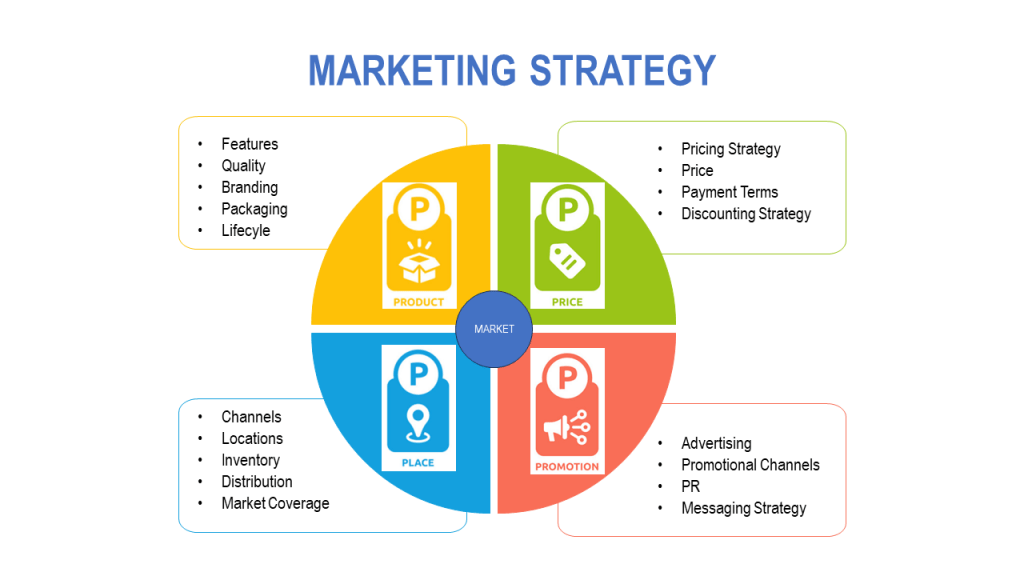The Evolution of Marketing Strategies: From Billboards to Bytes

Marketing has come a long way since the days of billboards and print advertisements. Traditional marketing techniques, such as television commercials, radio ads, and direct mail, focused on broad, untargeted audiences. While these methods were effective in their time, they often lacked precision in measuring success and targeting specific consumer segments.
Enter the digital age, where marketing strategies have evolved to become more data-driven and personalized. With the advent of online advertising, social media, and email campaigns, businesses can now target specific demographics with laser precision. This shift has not only improved the efficiency of marketing efforts but has also provided marketers with valuable insights into consumer behavior.
However, one crucial aspect that often goes unnoticed in the digital transformation is the role of phone calls in the customer journey. Despite the rise of online interactions, phone calls remain a vital touchpoint for many businesses, especially in industries like real estate, healthcare, and automotive. This is where call tracking steps in, bridging the gap between traditional and modern marketing techniques by bringing valuable insights into phone call interactions.
For a deeper dive into the evolution of marketing strategies, check out HubSpot’s comprehensive guide.
Introduction to Call Tracking: Unveiling the Hidden Gem of Marketing

Call tracking is a powerful tool that allows businesses to track and analyze phone calls generated by their marketing efforts. At its core, call tracking involves assigning unique phone numbers to different marketing channels or campaigns. When a customer calls one of these numbers, the call is routed to the business, and detailed information about the call, such as its source, duration, and outcome, is recorded.
This technology provides marketers with a wealth of data that can be used to measure the effectiveness of their campaigns, optimize their marketing spend, and enhance customer service. By understanding which channels are driving phone calls, businesses can make more informed decisions and allocate resources more efficiently.
Imagine running a multi-channel marketing campaign that includes Google Ads, social media, and email marketing. With call tracking, you can determine which channel is generating the most phone calls and, more importantly, which ones are leading to conversions. This level of insight is invaluable for refining your marketing strategy and maximizing your return on investment (ROI).
What is Call Tracking?: A Deep Dive into the Technology
Call tracking is a sophisticated technology designed to monitor and analyze the phone calls generated by various marketing efforts. At its essence, call tracking assigns unique phone numbers to different marketing channels or campaigns. These numbers are then used to capture detailed information about each call, providing invaluable insights into which marketing strategies are most effective.
When a potential customer dials one of these unique numbers, the call is routed to the business’s main line, while the call tracking system logs crucial details such as the caller’s phone number, the marketing source, call duration, and even call recordings. This information helps businesses understand which campaigns are driving calls, allowing them to measure the effectiveness of their marketing efforts accurately.
How Does Call Tracking Work?: Unraveling the Mechanisms
![]()
The process of call tracking involves several key steps:
- Number Assignment: Unique phone numbers are assigned to different marketing channels, such as online ads, print media, and social media campaigns.
- Call Routing: When a customer calls one of these numbers, the call is seamlessly routed to the business’s main phone line.
- Data Collection: The call tracking system records various details about the call, including the caller’s number, the source of the call, and the call’s duration.
- Call Analysis: Advanced call tracking systems can analyze call recordings and transcriptions, providing deeper insights into customer interactions and sentiments.
- Reporting: The collected data is compiled into comprehensive reports, allowing businesses to assess the performance of their marketing campaigns and make informed decisions.
This structured approach ensures that every customer interaction is tracked and analyzed, providing a clear picture of how marketing efforts translate into phone calls and, ultimately, business opportunities.
Types of Call Tracking: Dynamic Number Insertion and Static Call Tracking
Call tracking technology can be broadly categorized into two main types: Dynamic Number Insertion (DNI) and Static Call Tracking.
Dynamic Number Insertion (DNI)
Dynamic Number Insertion is an advanced method where a unique phone number is dynamically inserted into a website based on the source of the traffic. For instance, a visitor arriving from a Google ad would see a different phone number than a visitor coming from an email campaign. This allows businesses to track the exact source of each call, providing precise attribution for marketing efforts.
Advantages of DNI:
- Accurate Source Attribution: Pinpoints the exact source of each call.
- Real-Time Tracking: Updates numbers dynamically based on traffic source.
- Comprehensive Data: Provides detailed insights into customer behavior and campaign performance.
Static Call Tracking
Static call tracking involves assigning a unique phone number to each marketing campaign or channel. These numbers remain constant and are used to track calls from specific sources. For example, a print ad in a magazine might feature a different phone number than an online banner ad.
Advantages of Static Call Tracking:
- Simplicity: Easy to set up and manage.
- Cost-Effective: Ideal for smaller campaigns or businesses with limited budgets.
- Consistent Tracking: Provides clear data on specific marketing channels.
Enhanced Customer Insights: Unlocking the Secrets of Customer Behavior

Call tracking software offers a treasure trove of data that provides deep insights into customer behavior. By analyzing the details of inbound calls, businesses can uncover patterns and preferences that might otherwise go unnoticed. For instance, tracking the times and days when calls are most frequent can help businesses adjust their operational hours to better meet customer needs. Additionally, call recordings and transcriptions can reveal common questions or concerns, enabling businesses to tailor their marketing messages and improve customer satisfaction. This granular level of insight is invaluable for creating more targeted and effective marketing campaigns.
Improved ROI Measurement: The Key to Effective Campaign Evaluation
One of the standout features of call tracking software is its ability to accurately measure the return on investment (ROI) for marketing campaigns. By tracking the source of inbound calls, businesses can determine which marketing efforts are driving the most engagement and conversions. This data-driven approach allows marketers to identify high-performing campaigns and channels, as well as those that may need adjustment or discontinuation. Improved ROI measurement ensures that marketing resources are allocated to the most effective strategies, maximizing the impact of each dollar spent.
Optimized Marketing Spend: Smart Budget Allocation with Call Tracking Data
Allocating marketing budgets can be a daunting task, but call tracking software simplifies this process by providing clear data on campaign performance. With detailed reports on the sources of inbound calls, businesses can identify which marketing channels deliver the best results. This enables marketers to optimize their spending, directing funds towards the most successful campaigns and reducing waste on underperforming options. The result is a more efficient use of the marketing budget, leading to better overall outcomes and increased profitability.
Better Customer Service: Elevating Interactions and Quality
Call tracking software is not just a tool for marketers; it also has significant benefits for customer service teams. By analyzing call data, businesses can identify common pain points and areas where customer service can be improved. Features like call recording and transcription provide valuable insights into the quality of interactions between customers and service representatives. This information can be used to train staff, refine customer service scripts, and enhance the overall customer experience. Ultimately, better customer service leads to higher satisfaction and loyalty, which are crucial for long-term business success.
Choosing the Right Call Tracking Solution: Key Factors to Consider

Selecting the right call tracking software is crucial for maximizing the benefits of this technology. Here are some essential factors to consider when choosing a call tracking provider:
- Features: Look for a solution that offers a comprehensive set of features, such as call recording, real-time analytics, and dynamic number insertion (DNI). Advanced features like speech analytics and call scoring can also provide deeper insights.
- Scalability: Ensure the call tracking software can scale with your business. Whether you’re a small startup or a large enterprise, the solution should be able to handle your current call volume and future growth.
- Ease of Use: The software should have an intuitive interface that is easy to navigate. Look for solutions that offer user-friendly dashboards and simple setup processes.
- Integration Capabilities: Choose a call tracking provider that seamlessly integrates with your existing marketing tools, such as CRM systems, Google Analytics, and marketing automation platforms.
- Customer Support: Reliable customer support is essential. Opt for a provider with a strong reputation for responsive and helpful customer service.
- Pricing: Consider your budget and compare pricing plans. Some providers offer tiered pricing based on call volume or feature access, so select a plan that fits your needs.
Integration with Other Marketing Tools: Enhancing Your Marketing Ecosystem
Integrating call tracking software with other marketing tools can significantly enhance your marketing strategy. Here’s how to seamlessly integrate call tracking with key platforms:
- CRM Systems: Integration with your CRM system ensures that call data is automatically logged and associated with the correct customer profiles. This provides a complete view of customer interactions and helps in personalizing future engagements.
- Google Analytics: By linking call tracking with Google Analytics, you can track phone calls as conversions and include them in your overall marketing performance analysis. This helps in understanding the full impact of your marketing efforts.
- Marketing Automation Platforms: Integrating call tracking with marketing automation tools allows for more personalized and timely follow-ups based on call interactions. You can trigger automated emails or messages after a call to nurture leads effectively.
Setting Up Call Tracking: A Step-by-Step Guide
Implementing call tracking in your marketing strategy involves a few straightforward steps:
- Define Your Objectives: Determine what you aim to achieve with call tracking. Whether it’s improving ROI measurement, optimizing marketing spend, or enhancing customer service, having clear goals will guide your setup process.
- Select a Call Tracking Provider: Based on the factors outlined above, choose a call tracking software that best meets your needs.
- Set Up Tracking Numbers: Assign unique phone numbers to different marketing campaigns or channels. This will allow you to track the source of each inbound call accurately.
- Integrate with Existing Tools: Connect your call tracking software with your CRM, Google Analytics, and other marketing tools. Follow the provider’s integration guidelines to ensure a smooth setup.
- Configure Call Routing: Ensure that all tracking numbers route calls to the appropriate destinations within your organization. This might involve setting up call forwarding or directing calls to specific departments.
- Test the System: Before going live, conduct thorough testing to ensure that all numbers are working correctly and that call data is being captured accurately. Make any necessary adjustments based on the test results.
- Train Your Team: Educate your team on how to use the call tracking software and interpret the data. Ensure they understand how to leverage call insights to improve marketing strategies and customer service.
- Monitor and Optimize: Regularly review call tracking reports and analytics to assess the performance of your marketing campaigns. Use the insights gained to make data-driven decisions and continually refine your strategy.
Common Challenges: Navigating the Roadblocks in Call Tracking Implementation
Implementing call tracking software can significantly enhance your marketing strategy, but it comes with its own set of challenges. Here are some common obstacles businesses may face:
- Integration Difficulties: Integrating call tracking with existing marketing tools and CRM systems can be complex and time-consuming.
- Data Overload: The sheer volume of data generated by call tracking can be overwhelming, making it difficult to extract actionable insights.
- Privacy Concerns: Recording and storing call data raises privacy and compliance issues, especially with regulations like GDPR and CCPA.
- Attribution Accuracy: Ensuring accurate attribution of calls to the correct marketing channels can be challenging, especially with multi-channel campaigns.
- Technical Issues: Technical glitches and system outages can disrupt call tracking and lead to data loss or inaccuracies.
- User Adoption: Getting your team to adopt and effectively use the new call tracking system can be a hurdle, particularly if they are resistant to change.
Overcoming Challenges: Practical Solutions and Tips
Addressing these challenges requires a strategic approach and practical solutions. Here’s how you can overcome common call tracking obstacles:
- Simplify Integration:
- Choose Compatible Software: Select call tracking software that offers seamless integration with your existing tools. Look for providers with comprehensive integration guides and support.
- Leverage APIs: Use APIs to connect your call tracking system with other platforms. This can simplify data sharing and synchronization across systems.
- Consult Experts: Consider working with IT professionals or consultants to ensure a smooth integration process.
- Manage Data Overload:
- Focus on Key Metrics: Identify the most important metrics for your business and prioritize them in your analysis. This helps in filtering out unnecessary data.
- Use Analytics Tools: Employ advanced analytics tools to process and visualize call tracking data. These tools can help in uncovering patterns and generating actionable insights.
- Regular Reporting: Establish a routine for reviewing call tracking reports. Regular monitoring can help in managing data more effectively.
- Ensure Privacy and Compliance:
- Understand Regulations: Stay informed about data privacy regulations relevant to your business. Ensure your call tracking practices comply with these laws.
- Anonymize Data: Where possible, anonymize call data to protect customer identities. Use encryption to secure sensitive information.
- Obtain Consent: Always obtain customer consent before recording calls. Clearly communicate your data collection practices and privacy policies.
- Improve Attribution Accuracy:
- Use Dynamic Number Insertion (DNI): Implement DNI to accurately attribute calls to specific marketing channels. This method dynamically assigns numbers based on the source.
- Combine Data Sources: Integrate call tracking data with other marketing analytics to get a holistic view of campaign performance. This can improve attribution accuracy.
- Regular Audits: Conduct regular audits of your call tracking system to ensure data accuracy and address any discrepancies promptly.
- Resolve Technical Issues:
- Reliable Provider: Choose a reputable call tracking provider with a proven track record of reliability and uptime.
- Technical Support: Ensure your provider offers robust technical support. Quick access to support can help in resolving issues promptly.
- Backup Systems: Implement backup systems to prevent data loss during outages. Regularly back up call data to ensure continuity.
- Boost User Adoption:
- Training Programs: Provide comprehensive training sessions to educate your team about the benefits and functionalities of the call tracking system.
- User-Friendly Interface: Choose software with an intuitive interface to minimize the learning curve for your team.
- Involve Key Stakeholders: Engage key stakeholders in the implementation process. Their buy-in can help in driving broader team adoption.
